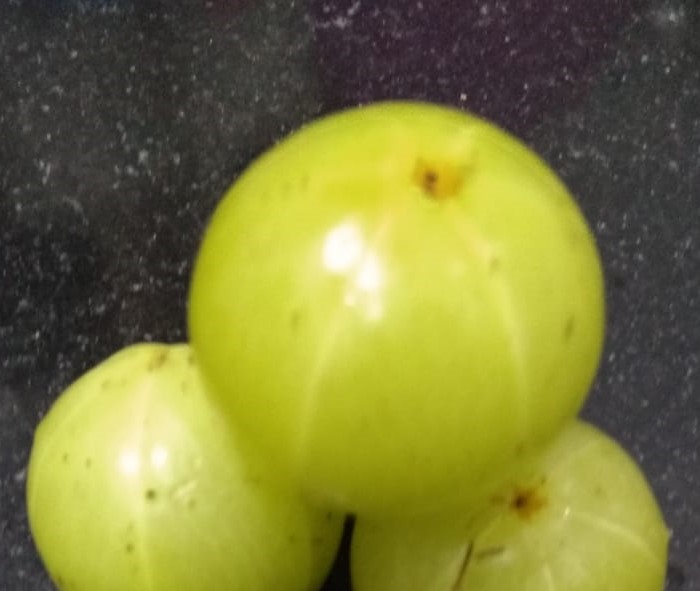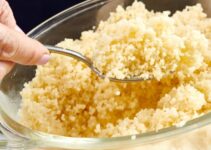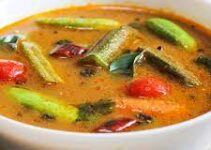What happens if you eat Amla daily?
Amla or Indian gooseberry is slightly bitter, but undoubtedly, it is the powerhouse of nutrients. It is loaded with vitamins, minerals, and other phytochemical substances that are essential for overall well-being. Amla is an excellent source of Vitamin C, which boosts your immunity and prevents many viral and bacterial infections. Antioxidants like polyphenols avoid certain types of cancers. According to Dr. Anjali, Chief dietitian of Max Hospital, Amla is considered a superfood because of its numerous nutrients. It boosts the immune system and prevents infections. Indian gooseberry is also used in pickles, jams, dips, and other dishes. The drinking of amla juice has been quite popular since ancient times to prevent many diseases and disorders. Amla is a Sanskrit word derived from ‘Amlaki’ meaning “nectar of life”, which protects one from varied health problems.

Different names of Amla
- Phyllanthus Emblica
- Emblic
- Emblic myrobalan
- Myrobalan
- Indian gooseberry
- Malacca tree
- Amla
Scientific classification of Amla
- Kingdom: Plantae
- Class: Angiosperm
- Order: Malpighiales
- Genus: Phyllanthus
- Species: Phyllanthus Emblica
- Binomial name: Phyllanthus Emblica
Traditional uses of Amla
By nature, the superfood is bitter. Amla is considered an ayurvedic marvel and is used in many forms like eaten raw, juice, chutneys, pickles, Murabbas, recipes, etc.
- It is widely used as pickles along with salt, oil, and spices.
- It is used in making various dishes, i.e. dal, alma ka murabba, soup, etc.
- In Ayurveda, it is used to make Ayurvedic medicines and herbal formulations.
- Amla is one of the integral constituents in the making of Ayurvedic Rasayana.
- Chyawanprash has an adequate amount of Indian gooseberry.
- It is also used in making inks and shampoos.
- Because of the presence of tannin, it is used in fixing dyes in fabrics.
13 wonder benefits of eating Amla
Amla is a boon to humanity and has been used since ancient times as traditional herbal medicine.
- Amla is a boon for hair: Amla has numerous health benefits. It prevents hair loss, hair fall, dandruff, and split end, etc. Amla is also beneficial in enhancing hair lustre, colour, and pigmentation. Regular intake of Amla juice makes hair darker and thicker and prevents greying. How do you think you could use it? The mix of amla juice and lemon when applied over the scalp and left for 15-20 minutes followed by washing helps to strengthen hair follicles and hair shaft. The application of amla paste is also suitable for making your hair darker.
- Treats cough and flu: Amla has an adequate amount of vitamin C. The eating of Indian gooseberry helps to treat cough and flu. It is also beneficial in the case of mouth ulcers. The use of amla juice and honey daily helps to eradicate cough.
- Amla is a blessing for skin: It has significant advantages for skin, glowing skin, and skin beauty. How does it work? The application of amla juice over the face helps to fight wrinkles, pimples, and acne. The application also removes the dead cells externally. Drinking juice regularly helps in glowing skin.
- Dandruff prevention: Dandruff can be removed by massaging one’s hair with a few drops of lime juice mixed with amla juice every night before bed.
- Fat burning & shedding weight: Amla is a diuretic which increases the frequency and amount of urine, thus releasing more and more toxins and waste products from the body. Since fat also constitutes urine, excreting more urine means burning more fat, thereby weight loss. As per nutritionists, amla speeds up metabolism and helps in shedding weight. An adequate amount of fibre and tannin acid clear constipation and reduce the risk of bloating.
- Amla for a healthy heart: Indian gooseberry is excellent for a healthy heart because of chromium, iron, and other biochemical substances. It helps to lower the level of cholesterol and strengthens the cardiac muscles. Chromium prevents plaque formation in the blood vessels, and Iron content ensures more oxy-haemo circulation.
- Cures mouth ulcers: There are a large number of people, especially women, who are suffering from mouth ulcers. Due to these ulcers, one experiences enormous difficulty in eating. However, gargling with amla juice and water helps to solve the problem.
- Diabetes control and management: In many studies, it has been shown that eating amla works wonders in the prevention and management of diabetes. How does it work? The regular intake of amla juice (2-3 tbs) daily helps to stimulate the pancreas Islet of Langerhans, which further regulates the secretion of insulin. Thus, it is effective in controlling diabetes.
- Good for eye health: Amal contains antioxidants, including carotene, which improves eye vision. The use of it helps to reduce cataracts, nearsightedness, Intra-ocular and vision improvement.
- Bolsters immunity: Amla is an excellent source of vitamin C and a great immunity booster. It is also packed with vitamin A, polyphenols, flavonoids, quercetin, and kaempferol. It has also been seen that amla increases the count of WBC. Due to all these properties, it acts as a great immunity booster.
- Improves liver function: Amla is full of phytochemicals like quercetin, gallic acid, corilagin, ellagic acids, etc. that help in flushing out toxins and combating free radicals. This detoxification process helps to stimulate liver function and boosts vitality.
- Gut health: The fruit helps to flush out toxins and waste products from the body, especially the digestive system. An adequate amount of fibre regulates bowel movements and also ensures the secretion of proper juices. The taking of amla juice is beneficial in the case of IBS, gut problems, constipation, and indigestion.
- Amla for PCODS: The use of it helps to balance hormones. It is suitable for the regulation of menstrual cycles and improves fertility in women. It has also been mentioned in the ancient Ayurvedic texts that eating amla counters the negative impacts of PCODS
Nutritional facts of Amla
Indian Gooseberry is the reservoir of minerals, vitamins and other biochemical substances. As per USDA, 100 grams of amla contains energy (44kcal), carbohydrate (10.18g), protein (0.88g), fat (0.58g), fibre (4.3g), folate (6mcg), niacin (0.300mg), pantothenic acid (0.286mg), pyridoxine (0.080mg), riboflavin (0.030mg), thiamin (0.040mg), vitamin A (290U), Vitamin C(27.7mg), potassium (198mg), calcium (25mg), copper (0.070mg), iron (0.31mg), magnesium (10mg), manganese (0.144mg), phosphorous (27mg) and zinc (0.12mg). It also contains essential biochemical substances like Emblicanin A&B, Geraniin, Ellagitannins, Gallic acid, Ellagic acid, Quercetin and Kaempferol.
6 top facts about Amla
- It is a boon for humanity because of an array of health benefits from the perspective of the prevention of diseases and the promotion of health.
- Indian Gooseberry is an excellent source of vitamin C out of all the vegetables.
- In India, it is considered a sacred tree.
- If you want to look younger, healthier, and fitter, use Alma daily in your diet.
- Amla balances the three Ayurvedic doshas-Vata, Pitta and Kapha.
- Amla has eight times more vitamin C than an orange, twice the antioxidants of acai berry, and 17 times that of pomegranate. Due to this, it gets the status of a superfoods.
Side effects of Amla
- Always prefer to take fresh amla juice.
- Market-prepared juice shouldn’t be taken as it contains flavoured and preservatives.
- Amla should be washed properly before eating.
- Excess use of amla may cause stomach pain.
- Since amla lowers sugar levels. Patients who have low sugar shouldn’t consume it.
- It increases the risk of bleeding during and after surgery.
- Liver patients shouldn’t take it in excess. They should consult a dietitian before taking it.





If it increases the risk of bleeding during and after surgery, what causes this? Does Amla thin the blood?